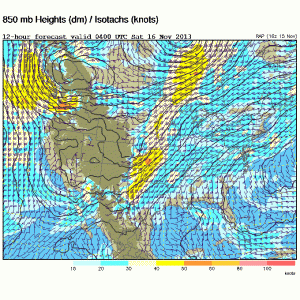Jeannette and I birded from Cape Neddick through Wells on Tuesday, seeing a really pleasant variety of birds in the process in the calm before the storm. Delayed by a snowy start and somewhat slick roads (OK, not slick if didn’t drive like it was a dry race car track – 7 cars were off the road between Freeport and York, however) that backed up traffic (“Hey, there’s a car in the ditch, let me look!”), we didn’t reach the Nubble neighborhood until almost 9:00, but by then the snow had ended, the ceiling lifted a bit, and a very light wind made for decent – albeit a bit raw – birding conditions. Although we didn’t have anything earth-shattering, we did have a fair number of “good birds.”
Without a day off together in December (the store is open seven days a week from Thanksgiving to Christmas), our annual late November run through our usual route is the last time we focus on thickets and migrant traps in the hopes for lingering migrants and rare passerines. Next time, waterbirds will be more of a focus. And the limited number of non-resident passerines that we detected today (other than Dark-eyed Junco, White-throated Sparrows, American Tree Sparrows, and a scattered few Yellow-rumped Warblers) confirms that – as did the impressive, and growing, quantity of waterbirds.
Three Carolina Wrens was the highlight of a thorough check of the Nubble neighborhood thickets, although we did have a group of about 40 Snow Buntings fly over. 45 Black Scoters, 13 Purple Sandpipers, 8 Great Cormorants, 6 Harlequin Ducks, etc at The Nubble were a sign of things to come along the shoreline.
Passerines were few and far between along Marginal Way and the adjacent neighborhood, but great numbers of waterfowl along the shoreline more than made up for it. As with everywhere we looked at the ocean today, all three scoters were present in numbers, including a close and talkative group of about 100 Black Scoters. Lots of Long-tailed Ducks, Common Eiders, and a total of 20 or 21 Harlequin Ducks were also present, along with a half-dozen Purple Sandpipers.
OgunquitBeach was a hotspot today, with a flock of 75-100 Sanderlings being joined by 32 Dunlin. 200+ Mallards and a handful of American Black Ducks were in the river, and a Belted Kingfisher hunted from its shore. One of the surprises of the day was two Ruby-crowned Kinglets actively foraging in four Dwarf Alberta Spruces in planters in front of the motel. A Winter Wren at Beach Plum Farm was a very good bird for this late in the season (they’re the “All but in winter wren” in Maine), and we had two Peregrine Falcons and an immature Northern Harrier in and around Harbor Road and Community Park in Wells.
We checked WellsHarbor and the jetties from a couple of vantage points (wouldn’t this be a perfect place to find a Ross’s Gull!?) and then scanned the offshore rock ledges still above water on the incoming tide from the parking lot at the end of Mile Road. Six more Dunlin were within the scattered flock of 75+ Purple Sandpipers, and there were a lot of the expected waterbirds, including 6+ Red-throated Loons and at least four Red-necked Grebes.
All day long we were scanning the marshes and shoreline rocks in the hopes of seeing a Snowy Owl. There have been a rash of reports in the past 7-10 days, as it looks like an irruption is underway. I have not heard any reports of lemming and vole populations on the tundra, but a southward push of Snowies means there are either too few rodents (a natural cyclical crash, especially in lemmings) or too many owls (good breeding productivity thanks to a boom year in lemmings). Either way, there are a lot of hungry owls around Maine right now. It was surprising that based on the recent uptick in reports, we did not see one all day…until our very last stop with the light rapidly fading. One immature female-type (extremely heavily barred throughout the body, other than the face) was standing guard on the last of the rocking ledges that I scanned. Any day with a Snowy Owl is a good day in my book!
Please remember that these birds are not down this far south by choice! The birds are here because they are hungry, or even starving (one emaciated bird was found dead at Prout’s Neck the other day, for example). While this charismatic and captivating species is sought by birders, photographers, and almost everyone else, we must be mindful of the dire straights that many of these birds are in. Too often we have heard stories of birds harassed, flushed repeatedly, or otherwise bothered by supposed fans. In the case of a Snowy Owl perched on a rock 100 yards or more offshore, there is little harm that can come from gawking at them from land. But when they are in the marsh, in the dunes, out in a field, on a building, etc, how about we remain just as respectful to these magnificent creatures and admire them from a safe distance. Besides, the birds’ natural behaviors will be more fascinating than watching it fly away from you. No, you really don’t need to see the bird a little better, or get a photo a little closer . . . admire them from a distance and let’s not make life any more difficult for these birds – or ruin it for other birders!









